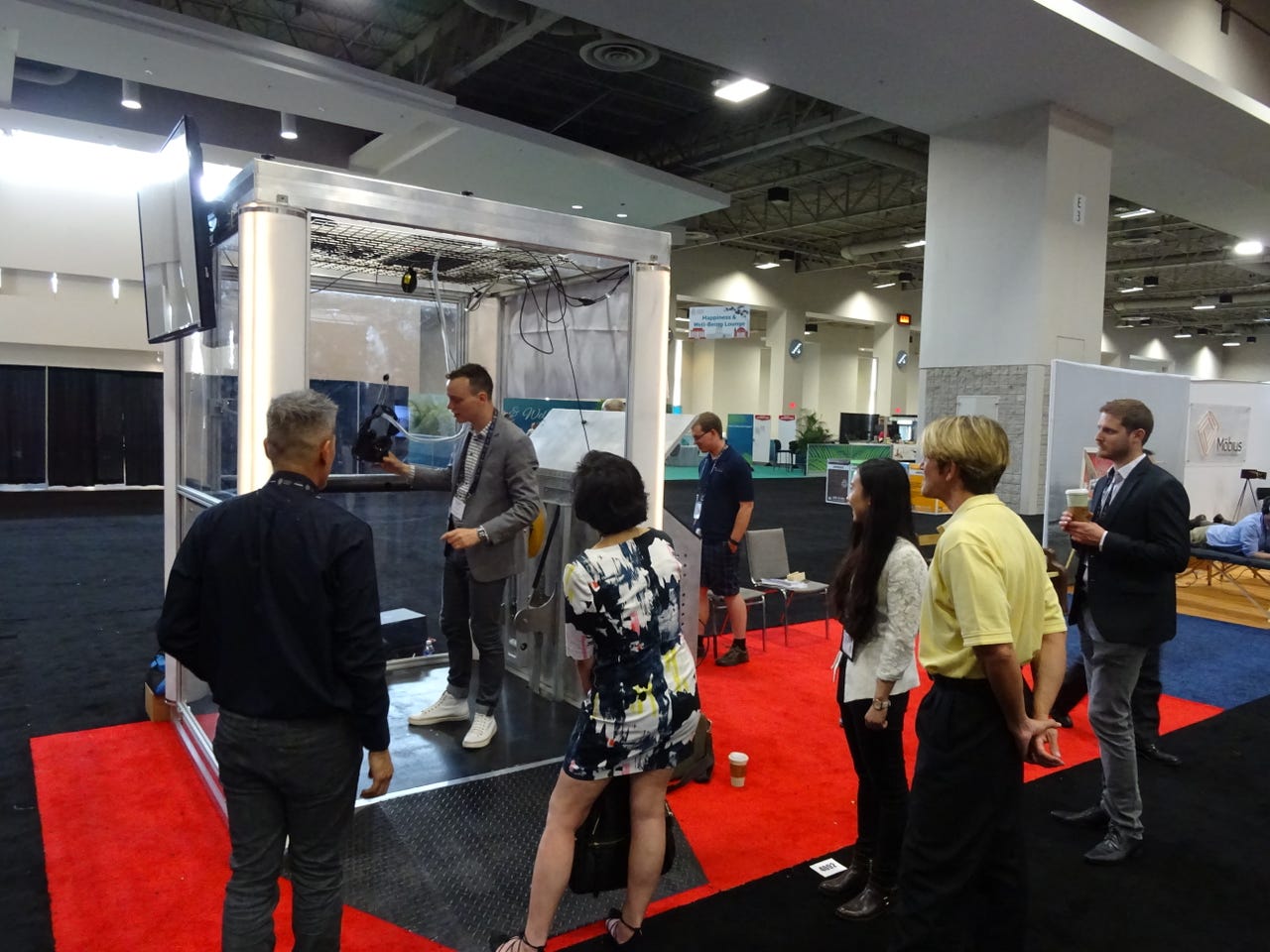SimWave's bespoke, plug-and-play VR makes war and trains come alive


SimWave's VR booth
The Battle of Vimy Ridge was fought between four divisions of the Canadian Corps and the German Sixth Army in 1917 during World War I as part of the opening phase of the British-led Battle of Arras in France. The Canadians were given the considerable task of capturing a high ridge occupied by the Germans in a diversionary tactic so that the southern flank could advance without being cut down by German fire. The entire offensive hinged on how well the Canadians would perform.
Not only did the Canadians accomplish this in a mixture of tactical innovation, grit and rigorous training, but the operation was also the first time that nationals from far-flung parts of the country worked together. Consequently, the Battle of Vimy Ridge is seen as heralding Canada's emergence as a nation. Now, SimWave, a Virtual Reality outfit from Ottawa, allows you to immerse yourself in that battle at the Canadian War Museum.
When you walk into the 6-foot square booth at the museum, you don a face helmet that needs no adjustments or calibrations. SimWave has previously used the Oculus headset as well as the HTC Vive for its projects but says it is now leaning towards a helmet designed by Sensex that uses Open Source Virtual Reality (OSVR), a software platform designed to set an open standard for virtual reality input devices.
As you start your experience inside the booth, you are instantly catapulted into the thick of battle as a member of one of the four Canadian Divisions, and you feel the floor rumble and shift under you as an artillery shell goes off nearby.
Courtesy of Dale Air, an English company that specializes in hundreds of different smells, the stench of battle has never been so real as odours waft into your helmet from liquid dripped from little vials onto cotton pads and blown in your direction by small fans. Animated guns rendered into reality can be wielded by your hands thanks to Leap Motion, a sensor device that supports hand and finger motions. Bursts of compressed air force you to duck as you see and feel bullets zing past your head.
You are now part of the battle and everything you do as you interact with your environment has consequences, thanks to algorithms encoded into the system using Unity, a leading cross-platform game-engine. Appreciating the heat of battle and the ravages of war has never been more visceral. "I find a lot of experiences passive where you simply watch and look around. Here, you're part of the story, and you decide the outcome," Matthew Thomas, director of business development told ZDNet.
A lot of the VR hype has surrounded Facebook's $2 billion acquisition of Oculus; hardware--and its affordable price points--are important components of VR's evolution towards mass-market adoption. Still, it is these bespoke immersive experiences offered by the likes of SimWave that make virtual reality's true potential come alive. Here, SimWave is a platform integrator, stitching together the best that VR offers into a memorable experience. Its booth for the War Museum cost around $150,000 and a 6-month design process for a three to five minute experience, but scaling is not a problem according to SimWave's Thomas. "If we can get 100 projects, we can make it work by just expanding our team," he says.
The revolutionary CN 6400 steam locomotive will soon be brought to life at the Canadian Science and Technology Museum
So far, SimWave has wowed museums across North America and was recently in Washington DC pitching its expertise. It won an account from the Canadian Science and Technology museum to design and build a VR booth that allows the user to run a CN 6400 Steam Locomotive while marveling at the real exhibit in an adjoining room. "You get to blow the whistle, adjust the knobs and valves and drive the train with very real outcomes that hinge on your actions," says Simwave's Thomas.
If SimWave's existing booths are a hit, there's no telling how popular the company can become with the museum crowd; consider the addictive thrills of being chased by a T-Rex or riding in an inter-galactic cruiser while you tour the galaxy.
However, the Canadian company isn't the only game in town. Marriott recently partnered with Relevant andAcademy Award-winning Framestore to create its 'Teleporter' booth using Oculus Rift Technology where misting nozzles, heat fans and scent dispenser whisk you instantly from your cold, rain-drenched day in London to a glorious beach in Hawaii.
This is where the next explosion of VR will occur and, as these ZDNet and Fast Company features describe it, the opportunities are endless and breathtaking: Employees in specialty, high-risk occupations can practice their jobs to avoid costly on-site failures; surgeons and nurses can critique a new operating theatre design before it's built; soldiers with PTSD, or people with public-speaking phobias or with a fear of flying can go through an immersive experience to confront--and rid themselves--of their fears; you could shop in a mall, test drive a car or even participate in a classroom thanks to new kinds of emerging experiences in this new and improved world of virtual reality.
For now, SimWave considers itself ahead of the pack. "We want to takeover the scene in the interactive space," says Thomas. Behind the company's self-confidence is its ability to assemble a designed solution (and booth) in just about an hour, making it an eminently transportable plug-and-play solution that marketers and worldwide would salivate over. That may prove to be a tough act to beat in the world of VR for now.